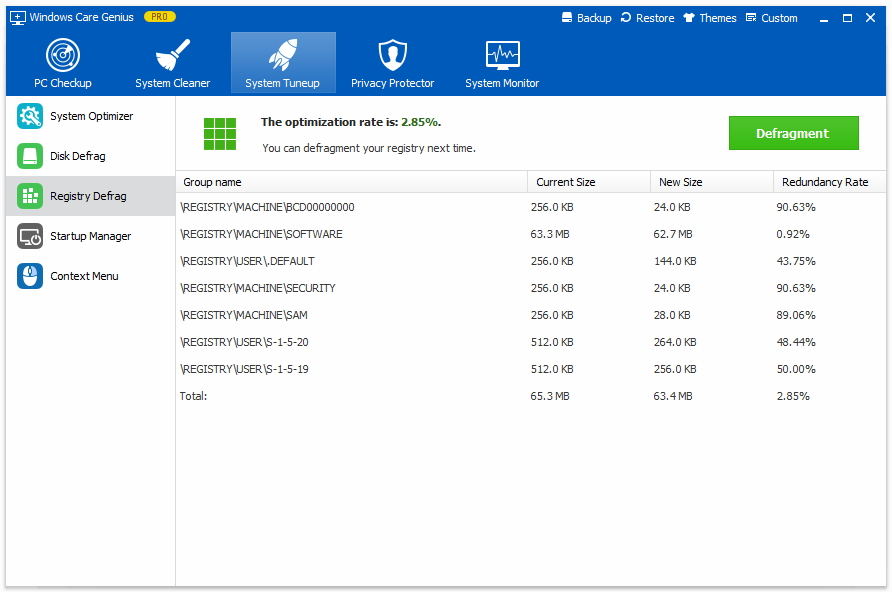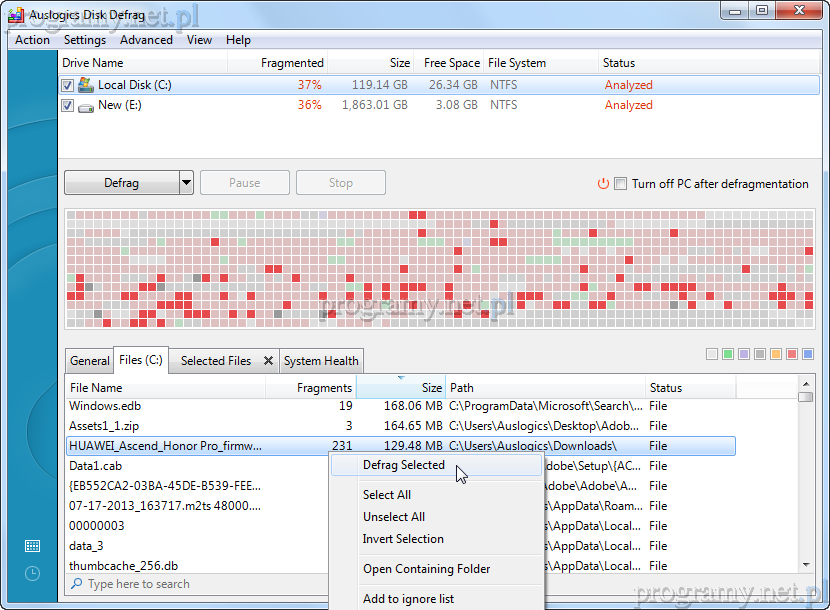

In such cases, running the system file checker or DISM.exe in the Windows Command Prompt quickly corrects the problem.

When these entries are no longer required, they become invalid and are removed from the registry. Invalid registry entries: Each user action creates new entries in the registry key.However, if the GB storage space is much less, those hard drives will appear more fragmented. In the following example for a 1 TB HDD, the fragmentation is only 5% due to free storage blocks. Limited drive space: if you have a very large hard drive, it will take longer to fill and get fragmented.Even if you remove all unwanted information from the registry, or uninstall an application, the size of the registry remains the same due to empty registry keys. Empty registry keys left behind: empty keys are left behind when you uninstall applications from your PC.The biggest causes of registry fragmentation in Windows are as follows: Because the registry defragmentation process enables you to remove empty registry keys, you must defrag the registry after you have performed any activity that removes many entries from the registry. If you’re on the latest Windows operating system with an HDD, you still may want to take advantage of this legacy maintenance technique.

The problems due to a bloated registry were particularly acute in Windows XP and Vista and continued to plague Windows 7/8.1 systems. However, with the arrival of Windows 10 and 11, the extent of registry fragmentation is much less compared to previous Windows versions. Defragmenting reverses the accumulated damage caused by various writing processes for installed programs, applications, and system files. It leads to isolated data fragments that make the system appear bloated and slower in responding to requests for information. Defragmenting your Windows registry is one of the best ways to address these persistent problems.Įach user action creates empty registry keys that are generated within the registry entries. With continuous PC use across a long duration (especially for older Windows systems and versions), you may experience freezes, slowdowns, and system interruptions. Regular registry maintenance ensures a healthy, high-performing PC. It is where you find all your Windows device hardware and software settings as well as user preferences. Most Windows users have little need to deal with what goes on in the Registry Editor. How to Defrag the Registry in Windows (Third-Party Software).How to Defrag the Registry in Windows (Native Method).


 0 kommentar(er)
0 kommentar(er)
